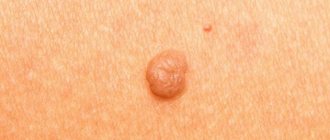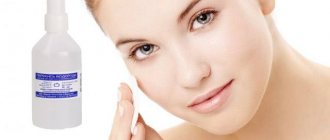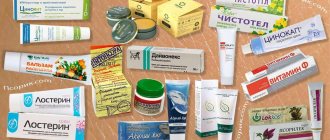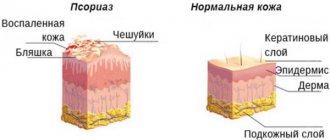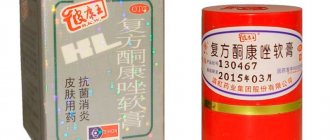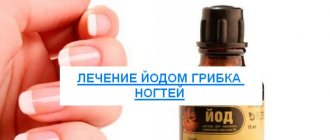When faced with a psoriatic rash, many patients begin to try various methods to eliminate it. Psoriasis can be treated using hydrogen peroxide. Based on this substance, special programs have been developed that help relieve the symptoms of the disease. Treatment of psoriasis with hydrogen peroxide also has certain contraindications, which can be detrimental to the patient’s health.
Treatment effectiveness
Experience with the use of peroxide indicates its positive effect in relieving psoriatic symptoms. For treatment, the usual 3% solution of hydrogen peroxide, sold in every pharmacy, helps. Scientists believe that the effect of peroxide on the affected tissues and skin helps to saturate these organs with oxygen, due to which regenerative processes occur faster.
In the human body, hydrogen peroxide should naturally be produced independently (in small quantities), but this process is possible only with the complete cleansing of the body of toxins and harmful substances, the appearance of which is promoted by poor nutrition and lack of physical activity. Such processes in the body contribute to cellular oxygen starvation and the development of various body malfunctions. Therefore, some scientists recommend replenishing oxygen deficiency with additional intake of H2O2.
Neumyvakin explains this technique by the ability of hydrogen peroxide to regulate the reduction-oxidation process and destroy all obstacles to the natural functionality of the body during the development of psoriasis.
Properties of peroxide for psoriasis
Disturbances in metabolic processes provoke the appearance of psoriatic rashes. Pathological conditions develop against the background of excessive accumulation of waste, toxin compounds and various salt deposits. A condition characterized by disturbances in the body’s metabolic reactions is caused by various factors:
- consumption of tobacco and alcohol products;
- unbalanced diet;
- infectious pathogens causing various pathological conditions;
- complete absence or insufficient physical activity.
According to the observations of I.P. Neumyvakin, perhydrol can be taken even by people who do not have indications for such therapy, but for the preventive purpose of various pathological conditions. When treating psoriasis, peroxide must be taken daily, as when using it the following are observed:
- increasing the body's defenses;
- preventing the presence of diseases of various tumors;
- reducing the likelihood of developing atherosclerosis;
- prevention of stomach diseases;
- elimination of pathologies in the genitourinary organs;
- reducing the percentage of infection by invasive parasites;
- preventive measures for colds;
- oral cavity treatment;
- reduction of nervous tension.
The professor believed that perhydrol was the safest substance for the treatment of psoriatic rashes. The main goal of therapy with this substance is to eliminate not only the symptoms of the disease, but also the plaque-like structures that form on the epidermis during psoriasis.
Preparing for treatment
The use of H2O2 must be accompanied by preliminary preparation. It is recommended to cleanse the liver and colon with an enema.
Drink 200 ml in the morning from 5 to 7 o'clock (on an empty stomach). still mineral water + 5 gr. magnesium (sorbitol). After half an hour, the patient should consume 1 tbsp. warm water, lie on your right side and apply a heating pad for 1 - 1.5 hours.
After cleansing, it is recommended to drink freshly squeezed juices (apple, beetroot, carrot), as they enhance the cleansing effect.
How does peroxide affect affected areas of the skin?
Psoriasis is an autoimmune disease of organs (skin). The disease manifests itself as red, scaly areas on the body, accompanied by severe itching. It is not a fatal pathology, but it is very worrying. Drug therapy reduces the symptoms of the disease, but after some time, psoriasis returns.
Hydrogen peroxide is a colorless liquid oxidizing agent with a metallic taste and an antiseptic effect. Contacting damaged areas of the epidermis and mucous membranes, the substance stops blood and destroys organic substances by releasing active oxygen from the cells. Such treatment of areas of the epidermis leads to the destruction of pathogenic microorganisms.
When peroxide is used to combat psoriatic spots, the microorganisms that cause the disease are deactivated. A single treatment with peroxide does not provide complete sterility. Therefore, it is necessary to perform the procedure regularly. Once in the human body, peroxide stimulates the immune system. Over time, the affected areas of the skin heal.
Treatment regimen according to Dr. Neumyvakin
In accordance with Neumyvakin’s theory, psoriasis progresses due to metabolic failure and, therefore, slagging in the body. Dr. Neumyvakin has developed a special system for treating psoriasis by cleansing the body with H2O2.
I. ORAL. According to the Neumyvakin system, you need to use 3% hydrogen peroxide 3 times a day half an hour before meals (or 2 hours after that), after diluting the peroxide in water. The maximum dosage during the day should not exceed 30 drops. Subsequently, the dose is increased by 1 drop. in a day.
- 1 d. – 1 drop. for 1 tbsp. l. water;
- 2 d. – 2 drops;
- Day 3 – 3 drops, etc.
The initial course lasts for 10 days (after reaching a concentration of 10 drops), after which you should take a short break (3-4 days) and start the 2nd cycle. The initial dosage should be 10 drops. for 1 tbsp. l. water.
To enhance the effect, it is recommended to take vitamin C.
II. COMPRESSES. Using peroxide in a compress is a fairly effective method of getting rid of psoriasis. 2-3 tsp. 3% H2O2 dissolve in ½ tbsp. water. The prepared solution is applied to a clean cloth and applied to the area of skin affected by psoriasis for 1 hour. Psoriasis should be treated in this way for at least 1.5 months.
III. RINSE THE ORAL CAVITY. To rinse 1-2 tsp. H2O2 dissolve in ¼ tbsp. warm water. Brushing your teeth with baking soda and hydrogen peroxide (1 teaspoon of soda + 6 drops of H2O2) is no less effective. The prepared solution is applied to a cotton pad (tampon), after which the gums are massaged for 4-6 minutes. Reviews from patients indicate the high effectiveness of this method for relieving psoriasis in the face and neck area.
IV. NASAL USE. 10-15 drops hydrogen peroxide dissolve in 1 tbsp. l. water, then the solution is drawn into a pipette and dropped in 10 drops. into each nostril. After 10-15 seconds, mucus begins to separate intensively, which should be “blown out” from each nostril in turn. Reviews from experts confirm the effectiveness of this method of treatment for psoriatic rashes in the scalp, as well as for ARVI, headaches, multiple sclerosis and Parkinson's disease due to the fact that this treatment method promotes the rapid delivery of oxygen to the brain.
V. INFUSION THERAPY. For intravenous administration, H2O2 (2 ml.) is poured into a sterile solution (200 ml.) of NaCl and administered to the patient at a rate of no more than 60 drops. in 1 minute.
For intravenous infusions, a certain scheme should be followed:
- 1 day - up to 100 ml;
- 2 d. – 150 ml;
- from 3 to 7 days - no more than 200 ml.
It should be borne in mind that intravenous administration of hydrogen peroxide can only be carried out in stationary conditions in order to promptly prevent unexpected reactions of the body. In the first 1-2 days, hyperthermia may appear, which is explained by the effect of H2O2 on pathogenic microflora. In addition, slight redness appears at the injection site, which is eliminated with a cold compress.
Who is Neumyvakin and why do people follow his advice?
Ivan Pavlovich Neumyvakin developed an original health system without the use of drugs.
One of the points of this system is the use of hydrogen peroxide, in particular in the fight against psoriasis. Neumyvakin claims that this liquid has a number of useful properties, so it should be used both during exacerbation of the disease and as a preventive measure.
The professor believes that the main cause of psoriasis is toxins, which peroxide helps remove. Just use it not externally, but internally. Surprised? Read on.
Let's figure out what kind of illness this is and how it is expressed. Red spots, slightly raised above the surface of the skin, and covered with white scales on top - this is psoriasis.
It can cover the body with plaques, or maybe with large lesions. Inflammations not only bring aesthetic discomfort, but also cause severe itching.
Side effects
Before treating psoriasis, possible side effects such as severe burning, pain and general discomfort should be taken into account. In addition, fainting is possible, which is associated with oxygen oversaturation of tissues and muscles.
Before neutralizing the disease with peroxide, it is necessary to make sure that there is no allergic reaction to this drug, and if manifestations are minimal, it is recommended to reduce the dose of peroxide by 2 times, followed by a gradual increase in the dosage.
Contraindications
Hydrogen peroxide for psoriasis can be used in almost all cases of painful manifestations - the product has proven its effectiveness and safety.
But only if used correctly. The only contraindication may be individual intolerance, which can happen when using any medicine - folk or medicinal.
Negative reviews may be due to failure to properly prepare for cleansing the body, as well as violation of recommended doses and conditions of administration.
Each organism is purely individual, and when treated with any drug, the reaction may differ even if the conditions are externally similar - this is evidenced by numerous clinical studies of official medicine.
During treatment of the affected areas, short-term burning and hypersensitivity may occur - this is absolutely normal. However, if the reaction lasts, treatment should be stopped and a doctor should be consulted.
Reviews about the application
Treatment of psoriasis with hydrogen peroxide, despite the fact that it shows positive results, is not indicated for all patients. Some patient reviews indicate a deterioration in their general condition, which depends on the body’s ability to break down H2O2 into oxygen and water, but in general, most reviews about this treatment method are positive.
NATALYA, 48 years old. “It was hard to believe in the healing power of peroxide for psoriasis, because I had been using expensive and stronger drugs for many years to get rid of psoriasis. Therefore, when I heard about this technique, I did not take it seriously. However, I had to believe in the miraculous properties of peroxide quite by accident when I cut my hand. While treating the wound, I also remembered the psoriatic plaques on my hand. At the same time I lubricated them too. After 3 days I noticed that the plaques became less bright. I continued to lubricate my hands even after the wound had healed and was positively surprised by the result. Really effective!”
ANASTASIA, 34 years old. “I immediately believed in the treatment of psoriasis with hydrogen peroxide, as I heard a lot of positive reviews from friends. I only used compresses, but there was improvement. The itching and flaking completely disappeared. However, I would like to note, based on personal experience, compresses are effective only in the quiescent stage of psoriasis, and in the acute period stronger drugs are needed, since the compress turns out to be useless.”
VLADIMIR, 31 years old. “A friend advised me to try to get rid of psoriasis with peroxide. I gave in to persuasion, which I greatly regret. After the first use internally (according to the scheme), it was as if boiling water was poured over me. I began to wipe the skin, but the effect was the same, and the plaques, instead of turning pale, became even brighter and the itching, on the contrary, intensified. I do not recommend using this remedy; proven medications are better.”
Psoriasis is an incurable disease and many patients use all methods of treatment. However, it should be remembered that treating psoriasis with hydrogen peroxide can be dangerous, since this drug has a certain toxicity. Therefore, it is necessary to carry out treatment under the supervision of a doctor.
Despite the fact that some results of clinical studies indicate the effectiveness of peroxide in the treatment of psoriasis, reviews from medical scientists indicate that H2O2 cannot be a recognized treatment for psoriatic manifestations and this remedy should be treated with extreme caution.
What patients say
Reviews about the treatment of psoriasis with hydrogen peroxide are quite contradictory. Obviously, peroxide cannot be used as an independent method of therapy, but in some cases its use is a good addition to traditional drug treatment.
Some patients write on forums that after using peroxide they experienced a long-term remission - up to 5-10 years. These data can hardly claim reliability. H2O2 gives a short-term effect. This is a purely symptomatic treatment, and, moreover, according to most dermatologists, it is not very effective.
There are often recommendations for the use of perhydrol - 30% hydrogen peroxide. It has a rather aggressive effect on the skin, so such an extreme method of therapy can lead to very serious complications.
Experts warn that when using any recipe with hydrogen peroxide, prior consultation with your doctor is necessary.
Is it possible to cure the disease completely at home?
It is impossible to get rid of scaly lichen forever at home. The disease cannot be completely cured with medications and folk remedies. But using peroxide, you can clear the skin and nails of psoriasis and achieve long-term remission. The main thing is to use the product correctly. It is advisable to combine external and oral administration of peroxide, adhere to a diet and avoid stressful situations.
The method of getting rid of skin pathology recommended by Neumyvakin can be used for psoriasis of the legs, arms, torso, and scalp.
